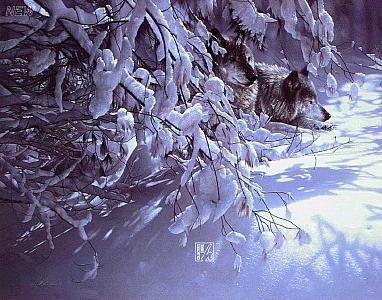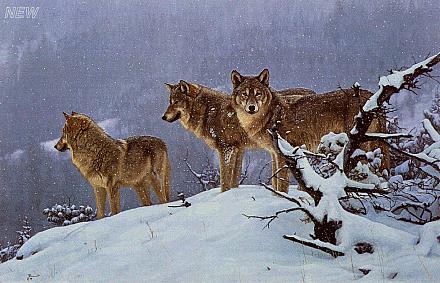Long Winter, Short Spring
|
|
Welcome! Here you will learn about the life of a wolf |

There are six months for the winter season and only three months for the spring season. Since wolves have more time in the winter they have to learn faster when young. The spring time is just long enough for mating and raising the pups.
Wolves will hunt in large packs during the winter, so that they have a better chance of catching the prey. If the snow is soft and deep the deer, moose, and pronghorn are slowed down by the snow, which makes them easier to catch. In the winter wolves will help other predators. The food the wolves leave behind is eaten by magpies, crows, foxes, and coyotes. That is how the wolves help other predators.
Wolves become scavengers during the hunting season, that is why livestock depredation fall off during the fall. Before the hunting season starts, wolves look for prey to fatten up for the winter, and some wolves know that livestock is easier prey than wild animals. Because wild animals are in prime condition and can often outmaneuver a wolf.

In September wolves become nutritionally stessed out. They become more so when the bigger game is in bad shape. During this time you can see weight decline and in some cases wolf pups will starve to death. A man named Bangs from ESPN Outdoor says to think of wolves as 12 year olds In a pack of four adults that has five pups, it means you have to feed not only yourself but the pups too.
some hunters, that hunt during the winter, oppose wolf recovery. They say that wolves reduce their chances of a successful hunt by killing prey animals.
